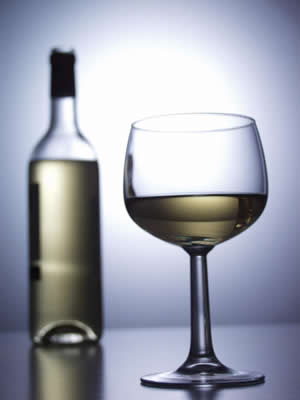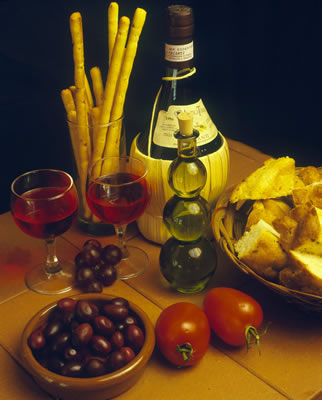| Greetings!
April's wines are in the house! Drop by anytime today or tomorrow, Saturday, March 27 to pick them up. Unfortunately, a Sunday pick up is not possible. Certainly, after Sunday, you can drop by anytime the following week to pick up your selections. I've become enthralled by several Spanish wines and I've included two of them in this month's club. Additionally, I wanted to explore Chardonnay and I was excited to taste a brand new Chardonnay by Robert Reynolds out of California I hope you love all of them!
Now for a bit of housekeeping. Many wine club members have expressed they prefer to pick up their wines on Fridays. We are officially changing our delivery date to the last Friday of the month. This small change means the date your credit card is ran will also be on the last Friday of every month. So you can expect to pick up your May shipment on April 30. I think this will put us on a better schedule and make pick ups easier for everyone. Please don't hesitate to contact me if you have any questions or concerns.
Happy Spring! We look forward to having you in the shop very soon.
-Janea Boyles |
|
2007 Robert Reynolds,"Rocky's Block" Chardonnay Lodi, California
After talking about California merlot last month, we thought we should flip the coin and discuss another varietal grown in California that has garnered a tricky, if not testy reputation. Chardonnay has centuries of history and is one of the six noble grapes. It has most likely been bottled in France longer and more confidently than anywhere else in the world. If you ever drink a "white burgundy," or a true Chablis, which is from Burgundy, it is made with the chardonnay grape.
According to Karen MacNeil in The Wine Bible, chardonnay was a little known grape and received very little attention outside of France until the late 1970's and early 1980's. When California winemakers started turning their attention to chardonnay, it would not be very long until more acerage would be dedicated to chardonnay in California than anywhere else in the world. I have tried to find detailed and exact reasons for how and why chardonnay boomed in California and became so widely planted. My internet research has yielded one very useful article from 2001 in the New York Times. Click this link to learn more: New York Times article from 2001
Chardonnay is probably one of the most polarizing grapes in the wine world. People have very strong opinions about it. "Sophisticated" wine drinkers love to hate it. Waiters love to make fun of people who order it at restaurants. Much like merlot, chardonnay's reputation has suffered from ubiquitous production in California. There are two techniques applied to Chardonnay that give it the buttery and/or oaky quality that has become synonomous with California chardonnay. They are, respectively, malolactic fermentation and cooperage choices.
Many people feel that oaky, buttery chardonnay is "overworked," "flabby," and "over-manipulated." It's true that those big buttery styles require manipulation through the malolactic fermentation process. This process was introduced to help the high acidity naturally occurring in chardonnay achieve more balance. I can imagine it was a logical innovation in an area such as Burgundy where the cold, damp weather doesn't always allow the grape to get completely ripe. There is a camp that feels the California winemakers have taken those lessons from Burgundy too far. They feel the natural fruit components of Chardonnay along with its acidity should be allowed to hold court in the glass. They also feel the malolactic fermentation and heavy oak aging do not allow the qualities of terroir to have representation.
And then, there are those of us who think the truth and balance of enjoying chardonnay lies somewhere in the middle. That's where a wine like Robert Reynolds "Rocky's Block" Chardonnay comes into the picture. After years of over working chardonnay in California, there are vintners who are bringing their techniques back to the middle ground and applying a small amount of malolactic fermentation and a very conscientious application of oak aging. This process will still round out the acidity, but not erase the grape's personality.
I think Robert Reynolds is walking on that middle ground with his new chardonnay. Robert Reynold's "Rocky's Block" wines are brand, spanking new! They are from a region east of San Francisco called Lodi. Lodi is known most famously for it's zinfandel production. Robert Reynolds is co-owner of Oak Ridge Winery, the oldest operating winery in Lodi and this is where he grows and puts together his "Rocky's Block."
Try this Chardonnay and let me know what you think. I found the very light malolactic fermentation to be the appropriate level and it gives the wine a nice balanced medium body. The brightness of the wine still shines through with a balanced acidity. There's marvelous fruit qualities and I enjoyed the hints of pineapple and citrus zest. Enjoy! |
2008 Monte Otan Garnacha, Spain
Monte Otan is one hundred percent garnacha, Spains most commonly grown grape.This wine is made by Bodegas Borsao winery in the Campo de Borja region. The grapes from this wine come from vines grown on the slopes of an extinct volcano named Moncayo and the soils are very fertile. The winemakers and growers in this region have dubbed their home region to be the "Empire of Garnacha" and they've done a very nice job of building it's image. They've established a wine museum there and all sorts of attractive tourist activities surrounding their wine industry.
The Monte Otan is a delicious wine and it's fairly dry.It'll go nicely with meats or even aged cheeses such as gruyere and aged cheddar. It's full bodied and has ripe berry flavors. The ripe, dark fruit flavors make this wine an enjoyable crowd pleaser despite the dryness.
Winery in Campo de Borga
 |
Aging red wines in oak for a substantial amount of time is a long standing tradition in Spain and tradition in wine making is very important to the Spainards. Some red wines used to be aged 25 years! However, a lot of modern winemaking techniques are being carefully added to wine production in order to make wines that are more appealing to the population outside of Spain. The Monte Otan garnacha is a good example of this, I think. |
|
2007 Bodegas Atalaya, Spanish Red Wine, Almansa
What can I say? I fell for two Spanish red wines this month! This one is a good find and if you want to lay a wine down for a couple of years, this one will age nicely. Check out the reviews on this gem.
91 points from Robert Parker's Wine Advocate: "This is the first release of Atalaya. The 2007 Atalaya is a blend of Monastrell, Garnacha Tintorera, and other red grapes. The wine was aged for eight months in French and American oak. This purple-colored wine has an expressive bouquet of violets, spice box, leather, game, blueberry, and black cherry. On the palate it comes off as borderline kinky and definitely sexy with lots of easy-going flavor, superb depth, complexity, and a 45-second finish. Although it can be enjoyed now, it will evolve for another 2-3 years."
(08/08) 90 points from Stephen Tanzer's International Wine Cellar: "Inky purple. Spicy dark berries and cherry on the nose, with strong black cardamom and cumin qualities. Candied blackberry and rose flavors are gently firmed by soft tannins and pick up a peppery note with air. Suave and immediately accessible, with very good finishing sweetness and cling." (Sept/Oct '08)
And, from the Wine Spectator: "This solid red adds intriguing mineral and licorice notes to a core of ripe plum fruit and chocolate oak. Firm tannins are balanced by lively acidity. Nicely put together. Drink now through 2014."
I could not find a website on the winery itself. I did find some great information about them on a winesellers website and would like to credit the below information to amazinggrapewinestore.com .
"The Atalayas project is named for a nearby Atalaya-a watchtower dating from the time of the Moors-and the Golban river that carved the Atauta valley.
Thanks to Miguel's foresight, Atalayas is endowed with an incredible 170 acres of priceless old Tempranillo vineyards. And for the future, Atalayas will be blessed with a new 48-acre Tempranillo vineyard, planted in 2002, which Miguel and Bertrand believe could one day yield the valley's greatest wines.
Though conceived from the start to sell at a market-beating price, Atalayas' vineyards share many of the characteristics that make Atauta and its single-vineyard cuvees so coveted.
Elevations here are 400 to 500 meters higher than in the heart of Ribera del Duero. The soils are also much sandier and temperatures significantly cooler. Harvest can be two to three weeks later-producing wines with a freshness, structure, and delineation unlike anything else in Ribera.
But while expressing the extraordinary qualities of the zone's terroir, Atalayas is made in a more forward style than the powerful Dominio de Atauta. To achieve this, the grapes are harvested by hand and carefully sorted. After fermentation in temperature-controlled stainless tanks, the wine spends one year in French barriques, 80% of which are second and third passage barrels from Chateau Haut Brion."
| |
|
 |
|
Wine Club Special
Exclusives for wine club members!
When you drop in to pick up your wines, you can enjoy 10% off any item in our cheese case. This inlcudes selections by Flat Creek Lodge, Atlanta Fresh Creamery mozzarella, our new Comte Gruyere selection and more!
See you in the shop! |
|
The Mercantile
1660 Dekalb Avenue
Suite 150
Atlanta, GA 30307
404-378-0096
|
|
A Word About Spanish Imports
Spain has more acerage of grape vines planted than anywhere else in the world. Interestingly, they do not have the highest wine production in the world. They are third behind France and Italy.
It is worth noting that both of our Spanish red wine selections this month are imported by Jorge Ordonez. He is quite a hero to many in the wine industry. Senor Ordonez began importing wines from his homeland at a time when most Americans had no idea there was good Spanish wine out there. He had his work cut out for him.
I have learned all sorts of things about Mr. Ordonez this month. However, I will not hold forth. I will instead recommend you visit Gary Vaynerchuk's website. He interviews Senor Ordonez and I think it's compelling to hear about his early struggles in becoming an importer. To check it out click here. Plus, you may find Mr. Vaynerchuk to be rather entertaining with gregarious personality and football helmet spit bucket!
| |